Ladakh – Culture and Tradition
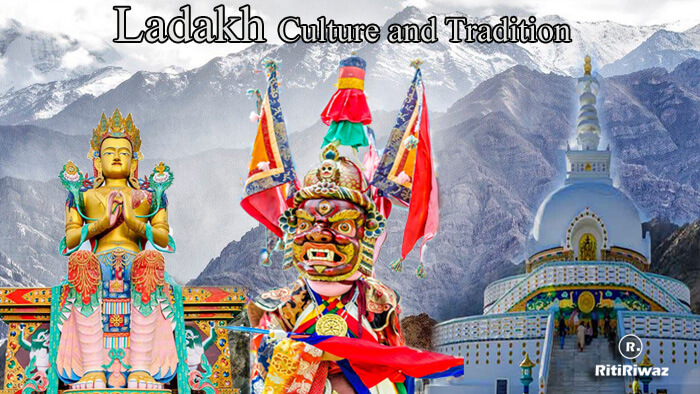
Leh Ladakh is a beautiful Union Territory of India, with its snow-capped peaks and clear blue skies, Barren Mountains With Meandering Rivers. Leh Ladakh is picturesque and is situated at an altitude of 9842 feet above sea level. Surrounded by the Karakoram in the north and the Himalayan mountain peaks in the south, beautiful Ladakh is a unique state in itself. To the north of Ladakh lies the borders of neighboring China and formerly occupied by Tibet of China.
Leh is the capital city of the Union Territory of Ladakh. Leh is the largest and coldest region in the state, in the winter nights, the temperature goes down below zero and heavy snowfall occurs from November to February. It is also one of the highest permanently inhabited towns in the world with an incredible sight to behold. Leh-Ladakh is often called “Little Tibet” or “Land of the Broken Moon“.
History
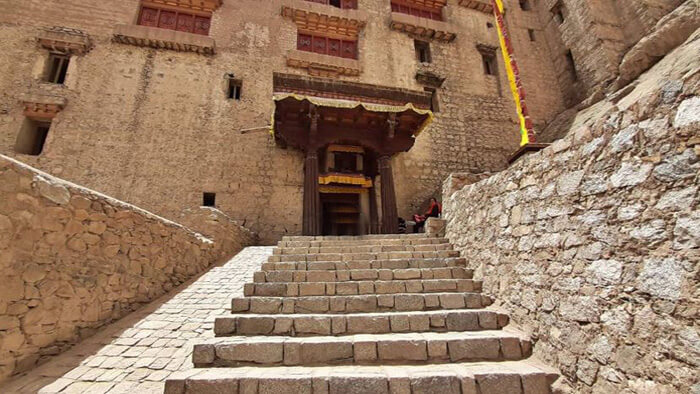
Ladakh’s 900-year history has its close and sometimes contentious relationship with Tibet, Kashmir, Baltistan, and Turkestan. There was an evolution of the Ladakhi state from the remnants of the old Tibetan empire. Leh (Ladakh) in past was known as Maryul or low land by some Kha- chumpa by others. Fa-Hein referred to it as Kia-Chha and Hiuen Tsang as Ma-Lo-Pho. Ladakh, known for centuries as the ‘land of passes‘ (La-pass; Dakh-land), is a mysterious land shrouded in myth and legend — a land where history and mythology merge. It was described by Fa-Hian, who traveled across its inhospitable terrain in 399 A.D., as “the land where snow never melts and only corn ripens“.
Travel in Tibet was difficult in the late nineteenth century, as the Tibetan authorities were not hostile to outsiders. During the mid-nineteenth and early twentieth centuries, a number of British and European missionaries, explorers, and ethnographers traveled in Tibet and Ladakh. Resistance to assaults by various Islamic powers in the area was narrated by the Buddhist Namgyal dynasty which ruled from the fourteenth century until the conquest of Ladakh by the Dogras of Jammu and Kashmir in 1842.
The independent kingdom of Ladakh had been conquered by the Dogra rulers of Jammu in 1842, subsequently becoming a British client, and thus more accessible. In both Tibet and Ladakh the terrain, altitude, and weather pose obstacles even to this day—the Leh to Srinagar highway is closed for almost half the year due to snow and landslides that accompany the spring thaw.
The Indus River is the lifeline of Ladakh. At many places, centuries-old inscriptions have been found here, which suggests that Ladakh was established in the Neolithic period. Most of the historical and current cities here, whether it is Leh or She, Basgo, Tingmosagung are all settled on the banks of the Indus River. In 1947, with the independence of the country, Pakistan attacked Kashmir, Pakistan occupied a large part of it, after which only this part of the Indus flows from Ladakh. By the way, there is a revered river in Hinduism, which flows only in Ladakh.
Ladakh, occupying as it does a sensitive area between India, Pakistan, and Chinese Tibet, was off-limits to tourists following the Indo-Chinese conflict in the early 60s. Access was not opened up again until 1974.
From time immemorial, Ladakh was a major center of all important trade routes. In 1979, Ladakh was divided into two districts Buddhists live in Leh and Muslims in Kargil. At one time Ladakh was a major trading hub from Central Asia. In ancient times, a branch of the Silk Route passed through the Ladakh region. Traders from other countries used to come here to trade camels, horses, mules, silk, and carpets and used to carry colors, spices, etc. from India.
The subsequent incorporation into modern India, along with border conflicts with Pakistan and China, occupies the chapter discussion up to the present day. Ladakh’s continued struggle for autonomy, and the ways in which it has dealt with inter-communal tensions between Buddhists and Muslims.
Throughout the 1950s and 60s, Ladakhis, both Buddhist and Muslim, complained that the Jammu and Kashmir state government was ignoring Ladakh and neglecting its financial needs. Finally, in 2019 the state of Jammu and Kashmir was divided into two union territories ‘Jammu and Kashmir‘ and ‘Ladakh’.
Culture and Tradition

Tibetan Buddhist culture was predominant in Ladakh for a long and people are influenced by the Tibetian way of life. Ladakhi people give the eldest son of their family to become a lama. Religious practices are pure Tibetan, and secular culture, though distinct, is similar. The everyday life of a Ladakhi revolves around gompa or monasteries. Ladakhi people celebrate many festivals like Losar, Hemis, Saka Dawa. Ladakhi people radiate a sense of satisfaction, stability, and plenty they are very friendly, peaceful, and tolerant.
Their traditional lifestyles were being transformed by the large Indian Army presence, increased public education, and government subsidies for various imported food staples such as rice and wheat. The youth was no longer interested in going back to the farms but instead clamored for job opportunities. Their demands were a significant factor in pushing for separation from Jammu and Kashmir.
Language
The Ladakhi, Balti, Tibetan, and Urdu languages are spoken in Ladakh. Ladakhi and Balti both forms of Archaic Western Tibetan and both languages are significantly different from Modern Tibetan, with which there is little mutual intelligibility. Common people mostly like to communicate in the Ladakhi language.
Religion
Its sparse population is evenly divided between Buddhists (predominating in Leh District) and Shiite Muslims (the majority in Kargil District).
Cuisine
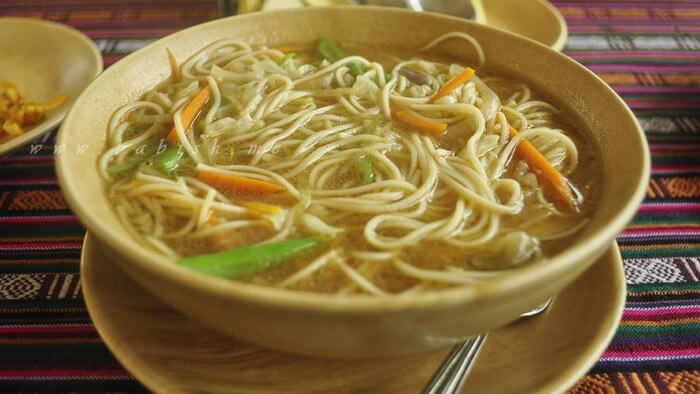
Ladakhi food is very much similar to Tibetan food. Famous food found in the mountains like Thukpa, Momo, Skyu, and Thenthuk is made in almost every household here. Ngampe (roasted barley flour) can be consumed without cooking and is useful trekking food. Skyu is immensely loved by the people of Ladakh and is also a traditional dish they like to eat on a daily basis.
Their food is highly rich in organic flavors and meat has a lot of importance to hold as well it comes to Ladakhi cuisine. The dishes usually include Yak meat, mutton, and chicken. Apart from this, traditional Butter Tea and Paba are also eaten and made with great fervor. Most of the surplus barley is fermented into an alcoholic beverage called chang which is usually drunk at festivals. Chang is made out of wooden drums also called zems. One can call it as one of the local brews of Leh Ladakh.
Costume
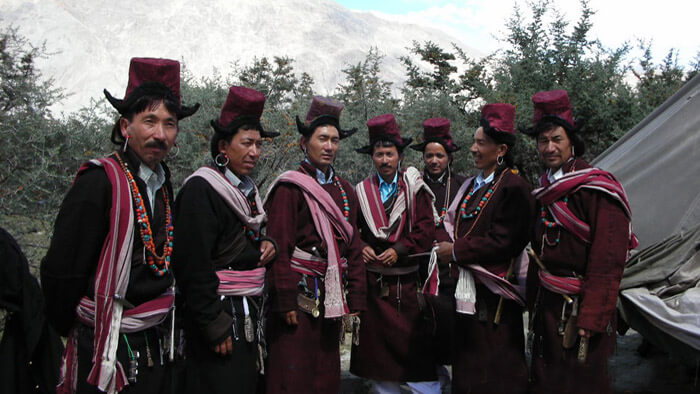
The area is under snow most of the time of the year so their dress is mostly woolens, men usually wear a long woolen dress named Goncha while women wear a long dress called Kuntop and Bok. They wear “Kuntop” but on their backs, they add a colorful shawl, the “Bok” – in which a baby or parcels can easily be carried. It used to be worn for warmth and protection on the back against heavy loads of sticks and rocks. Traditionally there was a brightly colored design on the outside, with Yak or goatskin on the inside to keep the wearer warm.
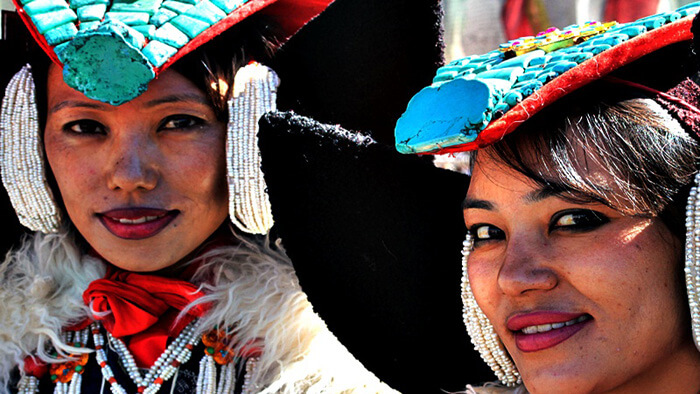
The women wear their hair in two long pigtails, a style also followed by some men. They top the picturesque ensemble with a top hat or “Perak”, which somehow remains firmly balanced, perched on top of their heads. The traditional Perak has three, five, seven, or nine lines of turquoise, according to the rank of the wearer. Only the very richest and royalist of families could wear nine lines. Shoes, known as “Papu”, are made of woven Yak hair or wool, often gaily decorated, with a sole of Yak leather.
Dance and Music
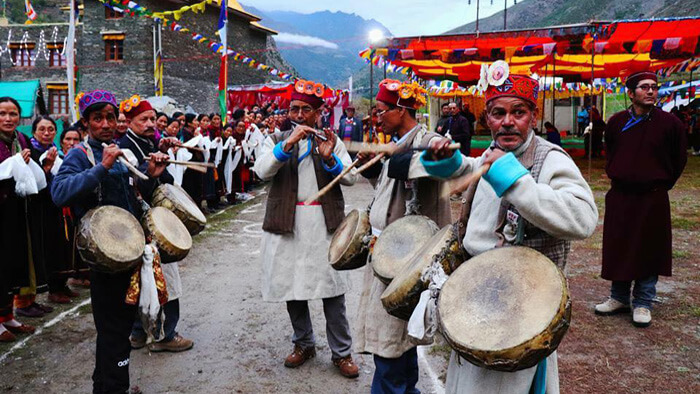
Ladakh festival comprises mask dances performed by Lamas, games such as polo, camel race, river rafting, archery, regional music, and dance. Larnya is traditional music played and Surna & Daman are traditional instruments for music. Ladakhi music is similar to the music of Tibet. Traditional music includes the instruments Daman, Surna, and Piwang (Shehnai and Drum).
Some of the popular dances of the Ladakh region are Khatok Chenmo, Shondol, Kompa Tsum-tsak, Jabro, Chaams, Chabs-Skyan Tses, Raldi Tses, and Alley Yaato. These dances are performed during various festivals and Ladakh marriages.
Fairs and Festival
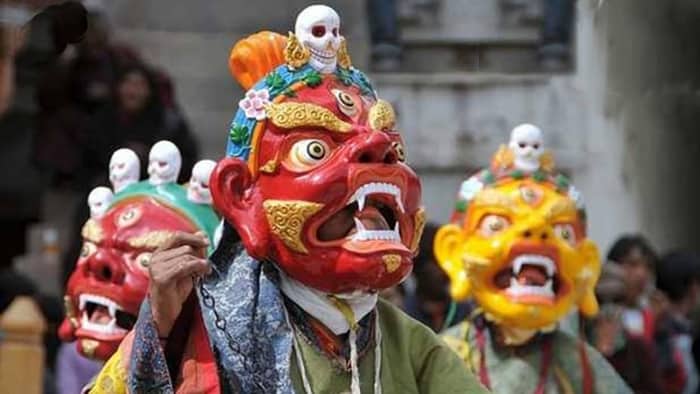
Ladakh is not only famous as a tourist destination but also famous for its Buddhist cultures, monasteries, and its festivals. Ladakh Festival is probably one of the most awaited events of the year in the country, eagerly awaited by not only Indians but by travelers from abroad too. This divine place with picturesque landscapes celebrated many festivals all year round which attracts many visitors from all over the world to take part. Some of the important festivals of Ladakh are Losar Festival, Hemis Festival, Sindhu Darshan Festival, Saka Dawa Festival, and Ladakh Festival.
You can find the courtyard of monasteries filled with visitors during these festivals to watch the unique traditional festivals celebrated with bright costumes and colorful masks. Their Festivals are organized on basis of occasions such as birth, marriage, the commemoration of head lamas, harvesting, flowering, and Losar or New Year. Every festival will give you insight into the beautiful culture and heritage of the people of Ladakh.
Art and Craft
The handicraft of Leh- Ladakh projects the unique art and cultural heritage of the region. There is a various variety of Ladakh handicrafts ranging from pashmina shawls to carpets, hand-woven woolen clothes, and hand prayer wheel. Some other signature style crafts of Leh-Ladakh are Pattu and Baskets. Pattu is a warm and rough woolen fabric. Baskets are woven of willow twigs or a particular kind of grass. They are used for carrying fresh vegetables, manure to the fields, or even babies. Besides, Thangka painting, traditional tie-dyed woolen shoes with leather sole.
The artisans produce an array of beautiful articles for religious and domestic purposes by using copper, silver, and brass. Ladakh Art and Handicrafts which includes teapots, chang pots, lids, hookah base, bowls, etc. Tibetan belt, butter lamp, headdress, Perak earrings, kettles, necklaces, etc. are also made.
Famous People
Rani Parvati Devi Deskit Wangmo – Queen mother of Ladakh Haji Ghulam Hassan Khan – Indian politician Eliezer Joldan – Teacher Tsering Landol – Gynecologist Ngawang Lobzang Thupstan Chognor – awarded the Padma Bhushan Sonam Wangchuk – Students’ Educational and Cultural Movement of Ladakh Sheikh Muhammad Hussain Zakiri – Imam Khomeini Memorial Trust, KargilTourism
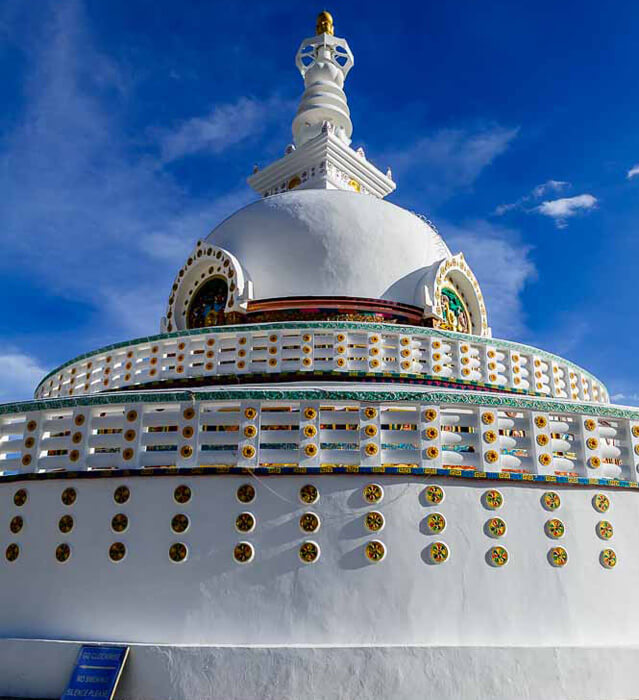
Leh Ladakh is the most beautiful union territory of India. Ladakh now covers the area from the Siachen Glacier in the Karakoram Range to the main Great Himalayas in the south. Leh city is a favorite place for tourists due to its attractive monasteries, beautiful tourist spots, and magnificent markets located here. Leh Ladakh is one of the best places to visit in India due to its difficult paths, beautiful snowfall, and many adventurous activities.
As a result of the increase in violence in the Kashmir valley during the 1990s, Ladakh has become an attractive alternate mountain destination for tourists, both Indian and foreign. The dramatic increase in tourism has had a profound impact on the local economy, most notably in the building boom throughout the region, but also in the explosion of cultural activity.
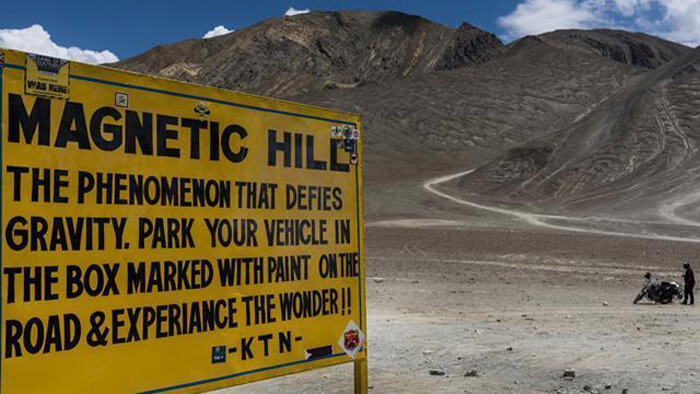
Some of the major tourist spots in Ladakh are Pangong Lake, Magnetic Hill, Leh Palace, Chadar track, Gurudwara Pathar Sahib, Phugtala Monastery, Shanti Stupa, Khardung La Pass, Hemis Monastery, and Leh Market.
Suggested Read: Formation Dates of Indian States
